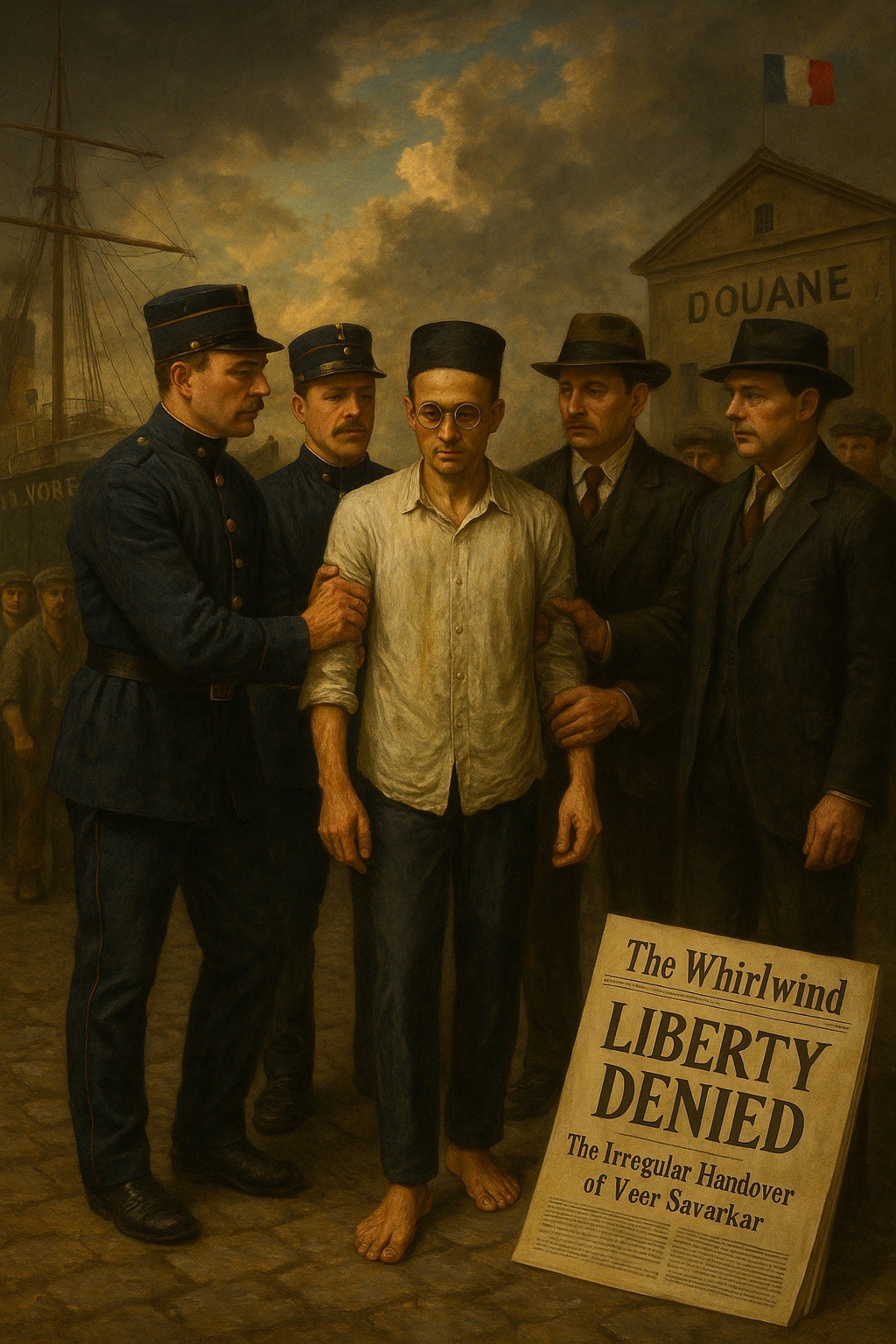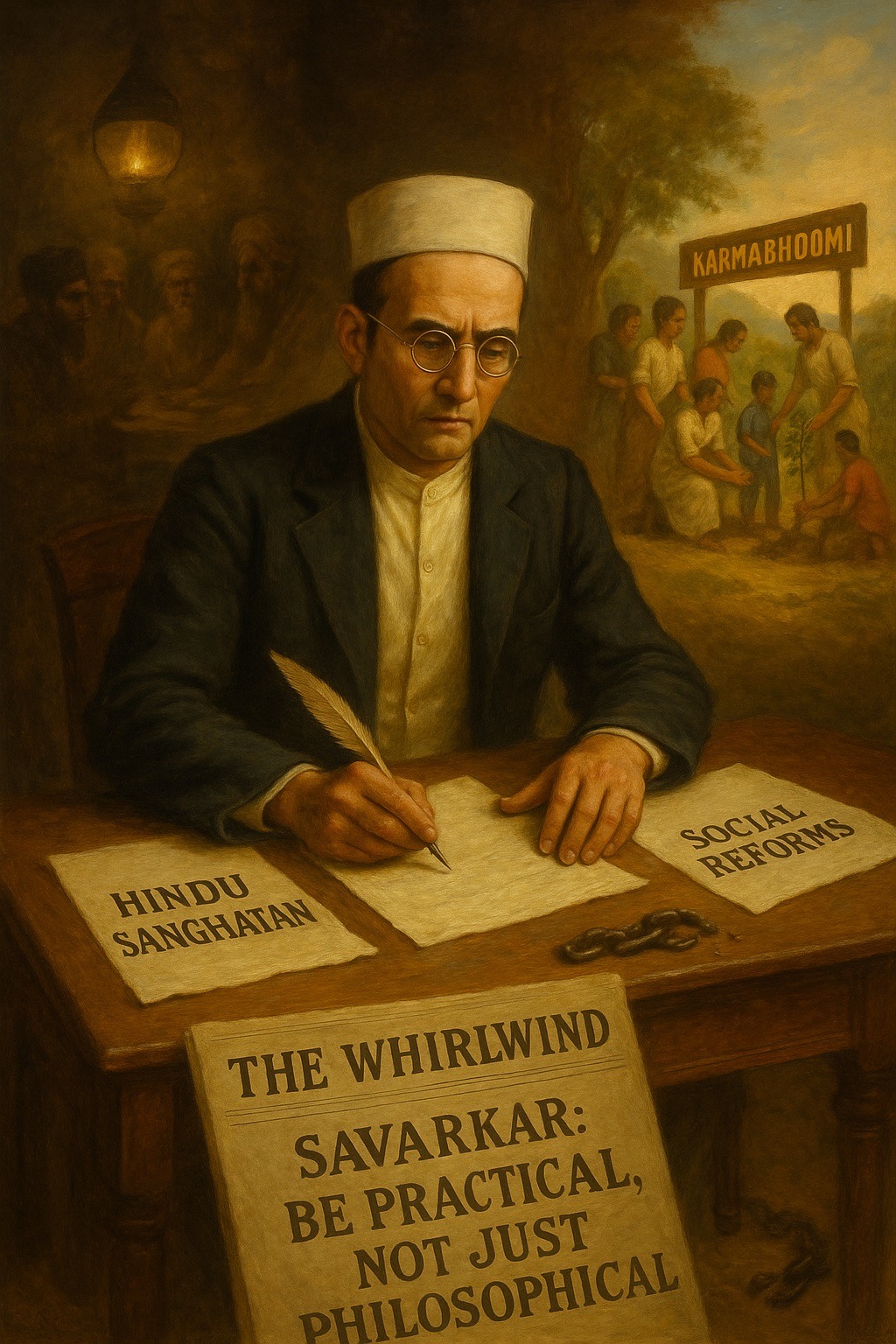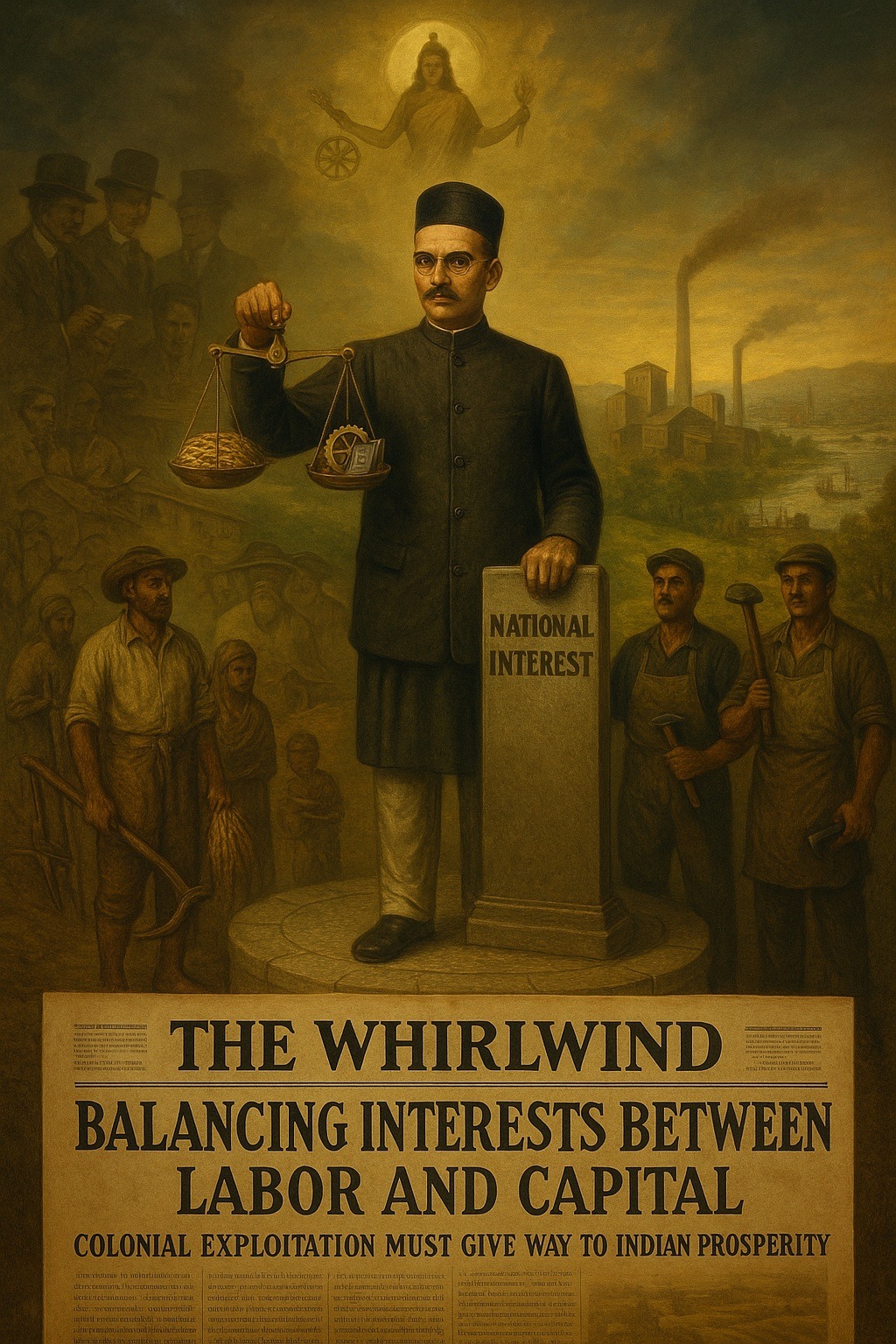Tag: VeerSavarkar
-
In July 1910, Vinayak Damodar (Veer) Savarkar attempted one of the most discussed escapes in the history of anti-colonial struggles. After leaping through a porthole of the British steamer S.S. Morea as it docked at Marseilles, he swam ashore and set foot on French soil – intending to claim political asylum. The Irregular Handover of…
-
Savarkar’s Coding of Hindutva; Metacode Rashtra, Part 9; Code Mythos (2/20); Codeelement Hindu Pantheon When we think of Vinayak Damodar (Veer) Savarkar, we often picture the fiery nationalist, the revolutionary in exile, or the thinker behind the idea of Hindutva. But one of the most fascinating aspects of his thought is how he used myth…
-
Savarkar’s Coding of Hindutva; Metacode Rashtra, Part 8; Code Mythos (1/20) When we hear the word myth today, we often think of stories that are not meant to be taken literally—legends with little claim to truth. Yet myths can do far more than entertain: they can inspire fascination, bind people together, and create a sense…
-
Savarkar’s Philosophy & Worldview, Part 11; Savarkar’s Five Philosophical Dimensions (4/6) Vinayak Damodar (Veer) Savarkar is often remembered for his contributions to India’s independence movement, for his activism, historical writings, and bold ideas. Among his many dimensions, his pragmatism stands out as a defining feature of his approach to social, political, and cultural challenges. Savarkar’s…
-
Economic Dimension of Hindutva, Part 10; Savarkar’s Economic Principles (6/13) Economic stability and national prosperity depend on a balanced relationship between industry, labor, and capital. In a thriving economy, workers should fairly partake in the profits of the industry. However, in times of economic downturn, just as capital suffers losses, workers too must be prepared…
-
Every year, 7 September is observed as Vande Mataram Day, commemorating the pivotal role of this iconic song in India’s struggle for independence. The date recalls the decision of the Indian National Congress (INC) in 1905 to adopt Vande Mataram at the height of the Swadeshi Movement against the Partition of Bengal. More than a…
-
Economic Dimension of Hindutva, Part 9; Savarkar’s Economic Principles (5/13) The balance between labor and capital has long been a subject of debate in economic and political thought. Vinayak Damodar (Veer) Savarkar, known for his nationalist and revolutionary ideas, also put forward an economic perspective that sought to harmonize the interests of labor and capital…
-
Religious Tradition and Political Struggle Traditional Roots of the Festival Anant Chaturdashi, observed on the 14th day of the bright fortnight of Bhadrapada (August–September), is one of India’s important Hindu festivals. Traditionally dedicated to Lord Vishnu as the infinite (Anant) sustainer of the universe, it revolves around the tying of the sacred Anant Sutra –…
-
On 1 July 1910, Vinayak Damodar Savarkar was removed from Brixton Prison under the heaviest of guards. His fate had been sealed: the British authorities had resolved to send him back to India to face trial in connection with revolutionary activities and the Nasik Conspiracy Case. For this purpose, he was placed aboard the French…










